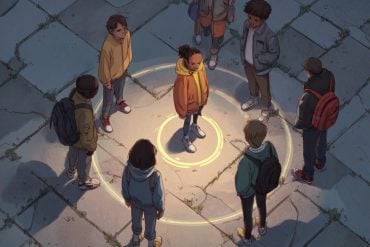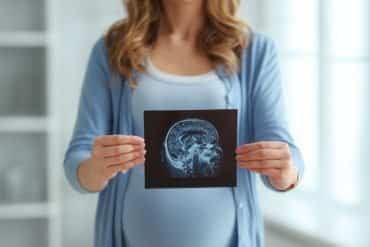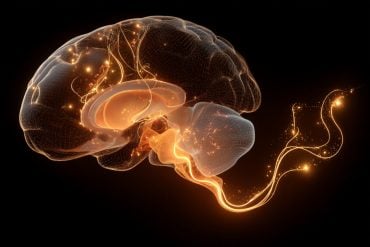Summary: A novel study uncovers a peculiar pattern of decision-making in mice, influenced by a specific gene named Arc.
While searching for food, mice repeatedly visited an empty location instead of staying at a site abundant in food. However, mice lacking the Arc gene demonstrated a more practical approach, sticking with the food-rich site, thereby consuming more calories overall.
This unique research potentially opens the door for a new field, ‘decision genetics’, investigating the genetic influence on decision-making, possibly even in humans.
Key Facts:
- A new study reveals a specific gene, Arc, influences decision-making in mice.
- Mice lacking the Arc gene displayed more rational foraging behavior, leading to higher calorie intake.
- The research indicates a potential new field of study, ‘decision genetics’, examining the genetic control over decision-making.
Source: University of Utah
Have you ever made a decision that, in hindsight, seemed irrational? A new study with mice, which could have implications for people, suggests that some decisions are, to a certain extent, beyond their control. Rather, the mice are hard-wired to make them.
“This research is telling us that animals are constrained in the decisions they make,” says Christopher Gregg, PhD, a neurobiologist at University of Utah Health and senior author of the study that recently published in iScience. “Their genetics push them down one path or another.”
Gregg and his research team started investigating decision-making after noticing mice repeatedly making what appeared to be an irrational decision. After finding a stash of hidden seeds, rather than staying put to eat them, mice kept returning to a location that had food in it the day before. Only on this day, the original location was empty.
“It was as if the mice were second-guessing whether the first location really had no food,” Gregg says. “Like they thought they had missed something.”
To Gregg and the study’s co-authors, the behavior didn’t make any sense. The animals ended up eating less because of the time spent continuously returning to the empty food patch. If that kind of behavior causes mice to eat less in the wild, it could spell trouble, Gregg explains, because not getting enough calories can be detrimental for a mouse.
The real surprise came after discovering that mice lacking a specific gene didn’t “second-guess” where to go and instead were more likely to stay and eat the food they found. As a result, they consumed more calories overall.
This was the first evidence the scientists found that genes could bias decision-making, even decisions that did not seem logical, at least to a human. In this case, the gene Arc appeared to be important for compelling the mice to continue searching for food even when it didn’t appear to be necessary.
“We all have a clear sense of what it is like to second-guess something, but who would have thought that this type of behavior could be so profoundly affected by one gene?” says Cornelia Stacher- Hörndli, PhD, neurobiologist and co-author. “This raises the question, are other cognitive biases under genetic control?”
Decoding behavior
To the human eye, a mouse’s life seems pretty simple. When placed in a naturalistic setting in Gregg’s lab, they left home, explored their surroundings, searched for food, ate a little, and made stops back home in between. But the view looked quite different after a machine learning algorithm deconstructed their journeys.
A custom program built by Gregg and study co-author Jared Emery analyzed 1,609 foraging excursions and saw that the mice repeated 24 behavior sequences over and over. As the mice foraged, they strung together the sequences like building blocks, interspersing them with spontaneous behaviors to construct more complex behavior patterns. One of them was the second-guessing behavior.
“To a certain extent, you could predict the future,” Gregg remarks.
That future changed for mice missing the gene, Arc. Six of the 24 behavior sequences were altered, and together, those differences short-circuited the second-guessing behavior. Previous research had shown Arc is involved in learning and memory.
But overall, analysis showed that the mice’s memory—and their other behaviors—were largely intact. The implication is that the effect on those six behaviors was specific.
“One intriguing idea is that the animals evolved to make those decisions because they were somehow advantageous in the wild,” Gregg says. He explains one possibility: when mice go back and forth to evaluate previous food locations, it helps them create a mental map. And that might help them find food faster the next time around. “Genetically controlled cognitive bias may allow for effective decision-making during foraging,” he says.
The question remains, is there a biological basis for other types of cognitive bias? And could genes guide decision-making in humans? More research will tell. “I believe that this research is foundational for a new field that we are calling ‘decision genetics,’” Stacher-Hörndli says.
In addition to Gregg and Stacher-Hörndli, additional co-authors are Alicia Ravens, Susan Steinward, and Jason Shepherd from University of Utah Health and Jared Emery from Storyline Health, Inc.
Funding: The research was supported by grants from the National Institutes of Health and published as “Arc Regulates a Second-Guessing Cognitive Bias During Naturalistic Foraging Through Effects on Discrete Behavior Modules.”
C.G. is a co-founder of and has equity in Storyline Health Inc., which uses artificial intelligence to build scalable research and clinical tools for precision medicine, and has advisory roles in Rubicon A.I., DepoIQ, and Uncharted Health. J.E. is an employee of Storyline Health.
About this genetics research news
Author: Christopher Gregg
Source: University of Utah
Contact: Christopher Gregg – University of Utah
Image: The image is credited to Neuroscience News
Original Research: Open access.
“Arc Regulates a Second-Guessing Cognitive Bias During Naturalistic Foraging Through Effects on Discrete Behavior Modules” by Christopher Gregg et al. Science
Abstract
Arc Regulates a Second-Guessing Cognitive Bias During Naturalistic Foraging Through Effects on Discrete Behavior Modules
Highlights
- Second-guessing is an economically irrational cognitive bias in foraging mice
- Loss of the synaptic plasticity gene, Arc, specifically affects second-guessing
- Machine learning decompositions of foraging reveal Arc-controlled behaviors
- Linkage of cognitive decision bias, genetic factors, and behavioral modularity
Summary
Foraging in animals relies on innate decision-making heuristics that can result in suboptimal cognitive biases in some contexts. The mechanisms underlying these biases are not well understood, but likely involve strong genetic effects.
To explore this, we studied fasted mice using a naturalistic foraging paradigm and discovered an innate cognitive bias called “second-guessing.” This involves repeatedly investigating an empty former food patch instead of consuming available food, which hinders the mice from maximizing feeding benefits.
The synaptic plasticity gene Arc is revealed to play a role in this bias, as Arc-deficient mice did not exhibit second-guessing and consumed more food. In addition, unsupervised machine learning decompositions of foraging identified specific behavior sequences, or “modules”, that are affected by Arc.
These findings highlight the genetic basis of cognitive biases in decision making, show links between behavior modules and cognitive bias, and provide insight into the ethological roles of Arc in naturalistic foraging.








